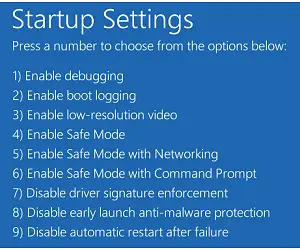|
Safe Mode has been an important troubleshooting tool for Windows since the operating system’s debut. With Windows 10, Safe Mode got a major upgrade, with new features that make it more powerful than ever. Read on to learn about them and new ways to access Safe Mode in Win 10… |
New Features of Windows 10 Safe Mode
When you have a problem with Windows, starting up your computer in Safe Mode can help you get back to good. You might want to print a copy of this article and stick it in your “computer emergency” folder, just in case you encounter a “blue screen of death” or other startup problem.
Safe Mode loads Windows with the bare amount of components necessary, with or without network (Internet) access. I read somewhere that Safe Mode is like a bomb shelter when Windows explodes. That may not be a perfect analogy, but this bare-bones Windows configuration makes troubleshooting simpler. You can tweak your auto-start programs one by one until something triggers the problem you’re having. You can also run a virus scan, access System Restore and other repair options in Safe Mode.
Since the invention of the stone tablet, Safe Mode has been invoked by restarting your system and holding down the F8 key until the Windows recovery menu appears. However… this is not how you access Safe Mode in Windows 10. For the first time, you can switch to Safe Mode while you are in Windows! Here are two ways to invoke Safe Mode:

Method 1: From the Start menu
- From the Start menu, choose Settings.
- Click on “Update and Security”
- Select “Recovery” from the left-hand column, then click on Restart Now.
- Wait a bit until the menu appears
- Click on Troubleshoot, then Advanced Options, then Startup Settings
- Click on Restart
Method 2: From the Sign-In screen:
- Restart your PC.
- When the Sign-In screen appears, select the Power icon and click on Restart.
- When the “Startup Settings” menu appears:
- Click on Troubleshoot, then Advanced Options, then Startup Settings
- Click on Restart
In either Method 1 or 2, when the system restarts, you will see a menu of options; you can choose to start Safe Mode without networking, or start Safe Mode with networking. If you anticipate needing the Internet while in Safe Mode, choose the latter option.
Since the “press F8 while the computer is starting” trick no longer works, and both of the above methods require that Windows be at least partially up and running, you might be wondering how to get into Safe Mode when you can’t boot up at all. I’ve not personally experienced this, but Microsoft says that if Windows tries to start and is unsuccessful twice, it will automatically start in Windows Recovery mode. From there, you select Troubleshoot, and follow the steps outlined above.
For completeness, I should mention that there is a way to restore the “legacy” F8 method of entering into Safe Mode during the startup process. It requires just a bit of minor geekery. First, you must open a Command Prompt window in administrator mode. To do so, type cmd in the Windows search box, right-click the top result, and select Run as administrator. Click Yes to allow the app to make changes to your device. Next, type (or copy/paste) the following command and press Enter.
bcdedit /set {default} bootmenupolicy legacy
Close the command prompt window. You can now enter Safe Mode by pressing F8 when restarting Windows 10.
Once you’re in Safe Mode, you can run your anti-virus program, try System Restore to roll back recent system changes, or uninstall recently added software. If a printer, scanner or other device isn’t working correctly, you can visit the manufacturer’s website and download a new driver for it.
New Features on the Startup Settings Menu
Note that the Startup Settings Menu includes options never seen before in Windows (see image above).
Disable Driver signature enforcement: Windows 10 normally requires digitally signed driver software that has been tested and certified to work with Windows 10. But you may need to load an uncertified driver to get your old printer or other peripheral device working. This option disables driver signature checks so you can load the old driver and see if it is causing your problem.
Disable early launch anti-malware protection: Anti-malware software includes components that load early in the startup process to guard against suspicious activity of software that loads later. Sometimes anti-malware software blocks the loading of other software when it shouldn’t, which can cause problems. This option lets you disable these early-loading components to see if they are causing your problem. Your anti-malware software will load completely later in the startup process.
Disable automatic restart after failure: As mentioned above, this kicks in if Windows thinks it failed to start successfully twice in a row. You wouldn’t want to change this option unless Windows gets confused and mistakenly thinks something went wrong during startup.
I am pleased to see options 7 and 8. I am not so pleased to see the new, somewhat tedious process of invoking Safe Mode. It would have been even better if the folks in Redmond had not hidden the “F8 during startup” option, and added these new ways to access Safe Mode. But overall, I give the new Safe Mode and Startup Settings a thumbs-up.
Have A Great Week From All Of Us At Zoha Islands Fruit Islands/Eden
